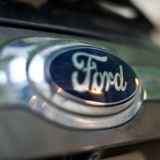Kia’s Burning Issue: The Telluride Fire Hazard Recall
In a fiery twist of automotive fate, Kia has announced a recall of nearly 460,000 Telluride SUVs, sending shockwaves through the ranks of vehicle owners and industry observers alike. This urgent action, flagged by the National Highway Traffic Safety Administration (NHTSA) on Friday, targets 462,869 models spanning from 2020 to 2024. The recall spotlights a perilous defect in the front power-seat motor, which risks overheating if the power-seat slide knob gets stuck, potentially igniting a fire.
In a dramatic advisory that feels more fitting for a Hollywood thriller than a consumer notice, Kia has urged owners of the affected Tellurides to park their vehicles outside and away from structures and other vehicles until the necessary repairs are completed. This directive underscores the severity of the issue and the immediate danger it poses. Imagine the unsettling scenario: a seemingly benign convenience feature transforming into a potential firestarter.
This recall raises profound questions about the intersection of technology, safety, and corporate responsibility. The Telluride, a flagship model celebrated for its comfort and cutting-edge features, now finds itself in the hot seat, quite literally. The defect is a stark reminder that the relentless push for innovation in the automotive industry must be balanced with an unyielding commitment to safety and reliability. When these priorities clash, as they have here, the consequences can be both costly and dangerous.
For Kia, the recall is more than a technical hiccup; it’s a critical test of the brand’s integrity and crisis management capabilities. How the company handles this recall will reverberate through its customer base and the broader market. By issuing a prompt warning and clear instructions, Kia aims to demonstrate accountability and a proactive stance on consumer safety. However, this also begs the question: how did such a glaring issue slip through the cracks of their quality control?
For the owners of these SUVs, the recall brings an inconvenient and perhaps anxiety-inducing disruption to their lives. The directive to park outside, while pragmatic, highlights the gravity of the risk—imagine the constant worry of a fire breaking out simply because of a defective seat motor. It’s a stark reminder that vehicle ownership, with all its conveniences, carries its own set of hazards.
This situation serves as a broader lesson for the automotive industry. Rigorous testing, comprehensive quality checks, and swift response mechanisms are not just regulatory obligations but moral imperatives. The safety of consumers must always take precedence over cutting-edge features and market competition.
As Kia scrambles to address this burning issue, the stakes are high. The company must not only rectify the defect swiftly but also rebuild trust with its customers. This incident will likely be a case study in how to—or how not to—manage a large-scale vehicle recall. The automotive world watches with bated breath, hoping that the flames of this crisis can be extinguished without further harm.






